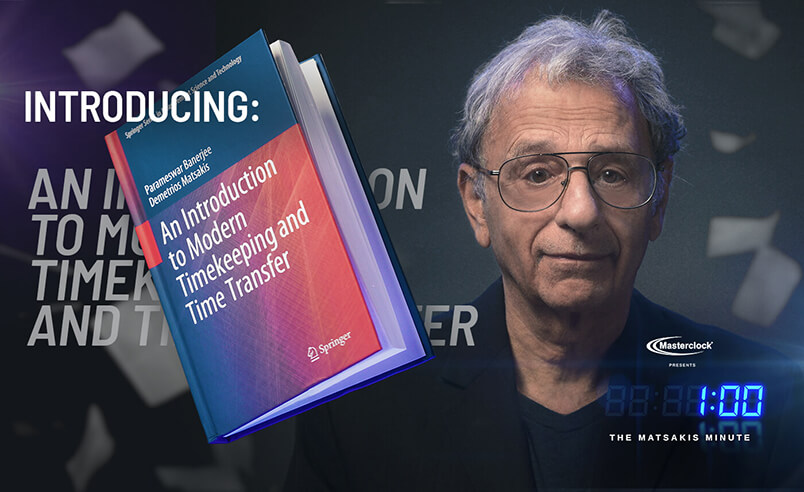By Dr. Matsakis
Years of Confusion: The Origins of The Modern Calendar
We are taught that the Spring Equinox, when the Sun is precisely overhead at the equator and when the day equals the night everywhere, falls exactly on March 20.[1] But before Julius Caesar, the Roman leaders would think nothing of changing the calendar so they could collect taxes earlier, keep themselves in office, or—if they felt like it—add a month so spring would arrive in March. But when Julius Caesar visited Egypt, he was impressed by far more than Cleopatra’s alluring eyes and agile mind. He watched her scientists in Alexandria use calendars to predict the flooding of the Nile, and eclipses too. Caesar decided it was time to reform the Roman calendar. To get things started, he added two additional months to the calendar, lining up the equinox. Simple? Not exactly. Caesar’s meddling is why the year 45 BC is known as the Year of Confusion. It had 445 days. Caesar was assassinated a year later. (I sometimes wonder if his messing with time itself contributed to Brutus’s decision to join the conspiracy.) After Caesar’s nephew Octavian emerged from the bloody power struggles that ensued, he declared his uncle Julius a god, gave himself the title Augustus, and took on the unfinished job of calendar reform. He thought he would solve the equinox problem forever by following the advice of scientists and making every fourth year a leap year.[2] Augustus called it the Julian calendar and renamed July in honor of his divine uncle. He later became recognized as a god himself, and you’ve probably already guessed who the month of August got named after. And amidst all these changes, is there any reason to be surprised that February ended up with the fewest days?
Of course, the divine Augustus did not change the calendar’s Year 1 from when Rome was founded—a date we know as 753 BC.[3] He was probably not even aware of King Herod’s perceived rival being born in an obscure town of a rebellious eastern province, and so changing the time of Year 1 was left to the monk Dionysius Exiguus five centuries later. Dionysius’s proposal also prescribed that years divisible by four would be leap years. The leap year formula stuck—though Dionysius was a little off on Jesus’s birth year, which most scholars say was between 4 and 7 BC.
Leap years made perfect sense when scholars realized that the Earth orbits the Sun and that the orbital period is very close to 365.25 days. But the inconvenient truth is that it takes only 365.24219 days to orbit the Sun. This means that, very slowly, the calendars still drift out of sync with the seasons. By the sixteenth century, about 10 too many leap days had been added—and that meant Easter was not being celebrated at the right time! To fix that problem, Pope Gregory XIII consulted the best astronomers at his disposal and, in 1582, decided to have leap days only in years divisible by 100 but not by 400. That would be perfect if the year was 365.2425 days.
If that was the only change the Pope had made, maybe his plan would have been immediately accepted. But he also stipulated jumping the calendar 10 days forward, so Easter would be consistent with the formulas set at the First Council of Nicaea in AD 325. Not to worry about financial implications—this time they did the math so that rents and taxes could be adjusted. But that didn’t stop people from believing that they were cheated out of 10 days of their lives. It is claimed their were riots. Queen Elizabeth I would have nothing to do with the Pope's plan. Her father had already divorced England from Catholicism, and none of the other non-Catholic monarchs saw any reason to change either.
For the next 400 years, European calendars disagreed by half a month. It wasn’t until the Bolsheviks took over that Russia adopted the Gregorian calendar, and Greece became the last European country to switch in 1923.[4, 5] Plenty of stories recount mistaken communications and avoidable mishaps during this time. Saudi Arabia didn’t switch its official calendar from the Moon-based Islamic calendar to the Gregorian calendar until 2016! All that time, these countries kept track of two calendars.
Are all calendar issues resolved now? No, though some of them can be managed. For example, Masterclock routinely tests its products for software bugs in their handling of leap years. Yet that will never prevent people from miscounting the days in intervals spanning a leap year. If you wanted to know the average COVID cases per day in 2020, you would be overestimating by .27% if you assume 2020 had 365 days. That’s an easily acceptable error for setting social policy, but a clock that inaccurate would lose four minutes a day. I’ve never measured it, but I bet Masterclock products won’t do that even after years on holdover.
One question that pops up at the end of every century stems from the fact that zero was not considered a legitimate number back when Dionysius did his calendar calculations. Because there is no Year 0, the Julian and Gregorian calendars go directly from 1 BC to 1 AD. To the purists, this means the second century AD started on January 1 of the year 101 instead of in the year 100. And that same delay applies to every century. This has sparked a debate every one hundred years since at least the Age of Enlightenment, when Isaac Newton wrote a friend that he couldn’t wait until 1701 so that the matter would “finally be behind us.”[6]
Of course, keeping the calendar in sync with the seasons doesn’t resolve every issue. For example, my calendar shows that Easter fell on April 4 this year (2021). Yet for a few hundred million otherwise loyal followers of the Gregorian calendar (see footnote [5]), it came on May 2. That’s due to a carefully considered, multi-faceted set of theological decisions made in 1923 at the Pan-Orthodox Conference of Constantinople. And unfortunately, it’s also a very long story—too long even for a footnote[7]. But the good news is that, at least in the USA, that difference is so ingrained that the Orthodox minority has no trouble distinguishing between the “real Easter” and the “American Easter.”
Footnotes
[1] Depending on your time zone, that brief instant of time might be on March 20 or March 21. It comes about because the Earth’s rotational axis (north pole) is not perpendicular (90 degrees) to its orbital plane but is instead inclined by 23 degrees. As the Earth orbits the Sun, the spot on the Earth where the Sun is exactly overhead varies from latitude 23 degrees south (at the start of the northern winter) to 23 degrees north (at the start of the northern summer). We call those latitudes the Tropic of Capricorn and the Tropic of Cancer. This is why we have winter and summer, although it turns out the Earth is a little closer to the Sun in the northern winter. See the next footnote.
[2] This was good advice, especially as in those days the Sun went around the Earth. The Sun actually followed an epicycle, a small circle whose center followed a larger circle around the Earth. Later, astronomers realized the data were better satisfied if the heavenly bodies traveled in epicycles upon epicycles. Kepler and Newton replaced the epicycles with ellipses, and Einstein replaced the ellipses with ellipses that precessed (the tilt of their orbit changes direction), because time runs a little slower if you are in the part of the orbit that is closest to the Sun. That works for black holes too.
[3] Rome was founded by two brothers, Romulus and Remus. Descended from Aeneas, who had escaped the burning city of Troy half a millennium earlier, they were cast into the Tiber river as infants by a wicked, usurping uncle and raised by a she-wolf. After growing up and killing their wicked uncle, they decided to found a town at the site where they had been saved. Unfortunately, the brothers had a quarrel and Romulus won—which is why Rome is not called Remu.
[4] More drastic and parallel calendar changes were established after both the French and Russian revolutions, but they didn’t last long. France even abandoned the 24-hour system, but Napoleon brought it back at the request of the French navy so they could use existing maps to navigate.
[5] But a mere sixty years later the far-thinking socialist government of Greece made it the first country to abandon the Gregorian system. They enacted a plan similar to a proposal by the English astronomer John Herschel, who pointed out that we can do better if we let the year 4000 be a normal non-leap year after all. (No, this is not the Herschel who discovered Uranus. That was his father William, although by some accounts, William’s sister Caroline deserves equal credit.) With the advice of the Serbian astronomer Milankovitch, they adjusted the leap year schedule to differ with the Gregorian schedule, starting in the year 2800.
[6] The US Naval Observatory had a real-millennium party on December 31, 2000, although it did also have a false-millennium/real-Y2k party on December 31, 1999. When their web pages are fully upgraded (and, by definition, totally hack-proof), you might want to check out https://www.usno.navy.mil/USNO/astronomical-applications/astronomical-information-center.
[7] The short answer is that Easter is on the first Sunday after the first full Moon after the spring equinox, but the Julian equinox now comes 13 days later than the Gregorian equinox. So if the last full Moon after the Gregorian equinox also happens to be after the Julian equinox, the two calendars can agree on Easter. But if that last full Moon is before the Julian equinox, then another month must pass before the Julian Easter. But unfortunately the two calendars also compute the full Moon differently, which they call the ecclesiastical full Moon.
About Dr. Demetrios Matsakis
 Dr. Demetrios Matsakis attended MIT as an undergraduate and received his PhD in physics from UC Berkeley, where he studied under the inventor of the maser and laser; and built specialized ones in order to observe interstellar dust clouds where stars are born. His first job was at the U.S. Naval Observatory, building water vapor radiometers and doing interferometry to observe quasars and galaxies at the edge of the observable universe. After developing an interest in clocks, Dr. Matsakis would spend the next 25 years working hands on with most aspects of timekeeping – from clock construction, to running the USNO’s Time Service Department, to international policy. He has published over 150 papers and counting, but gets equal enjoyment out of beta-testing his personal ensemble of Masterclock products.
Dr. Demetrios Matsakis attended MIT as an undergraduate and received his PhD in physics from UC Berkeley, where he studied under the inventor of the maser and laser; and built specialized ones in order to observe interstellar dust clouds where stars are born. His first job was at the U.S. Naval Observatory, building water vapor radiometers and doing interferometry to observe quasars and galaxies at the edge of the observable universe. After developing an interest in clocks, Dr. Matsakis would spend the next 25 years working hands on with most aspects of timekeeping – from clock construction, to running the USNO’s Time Service Department, to international policy. He has published over 150 papers and counting, but gets equal enjoyment out of beta-testing his personal ensemble of Masterclock products.

